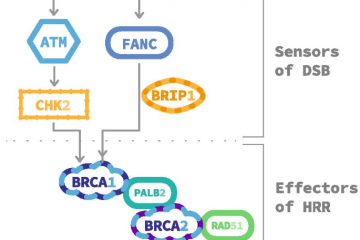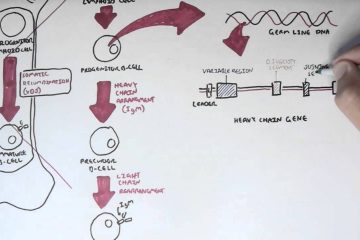Expected use
The Real-Time Fluorescent RT-PCR Kit for Detecting SARS-CoV-2 is an in vitro diagnostic real-time reverse transcription PCR assay for the qualitative detection of SARS-CoV-2 nucleic acids on pharyngeal (oropharyngeal) swabs, nasopharyngeal swabs, anterior nasal swabs, middle turbinate nasal swabs, nasal washes, nasal aspirates, and bronchoalveolar lavage fluid (BALF) from people suspected of having COVID-19 by their health care provider. The tests are limited to laboratories certified under the Clinical Laboratory Improvement Amendments of 1988 (CLIA), 42 USC §263a, which meet the requirements to perform highly complex tests.
The test results are for the identification of SARS-CoV-2 RNA. SARS-CoV-2 RNA is generally detectable respiratory samples during the acute phase of infection. The positive results are indicative of the presence of SARS-CoV-2 RNA. Clinical correlation with the patient’s history and other diagnostic information is needed to determine the patient’s infection status. The positive results do not rule out bacterial infection or co-infection with other viruses. The detected agent may not be the ultimate cause of the disease. Laboratories are required within the United States and its territories to report all results to the appropriate public health authorities.
Negative results do not exclude SARS-CoV-2 infection and should not be used as the sole basis for patient management decisions. Negative results should be combined with clinical observations, patient history and epidemiological information. The real-time fluorescent RT-PCR kit to detect SARS-CoV-2 is designed to be used by qualified laboratory personnel specifically instructed and trained in real-time techniques PCR and in vitro diagnostic procedures. The real-time fluorescent RT-PCR kit to detect SARS-CoV-2 is only for use under the Food and Drug Administration Emergency Use Authorization.
Summary and Explanation
COVID-19 has spread throughout the world. A new coronavirus (SARS-CoV-2) was identified as a pathogen. Cases of asymptomatic infection, mild illness, severe illness, and some deaths have been reported. The Real-Time Fluorescent RT-PCR Kit for Detecting SARS-CoV-2 is an in vitro molecular test diagnostic test that helps in the detection and diagnosis of SARS-CoV-2 and is based on its uses nucleic acid amplification technology. The product contains oligonucleotide primers, Labeled oligonucleotide probes and control material used in real-time RT-PCR for in vitro qualitative detection of SARS-CoV-2 RNA in respiratory samples.
Principles and Procedure
The real-time fluorescent RT-PCR kit to detect SARS-CoV-2 is a real-time reverse transcriptional polymerase chain reaction (RRT-PCR) assay. SARS-CoV-2 primer and probe set(s) is designed to detect SARS-CoV-2 RNA in the throat (oropharyngeal) swabs and Bronchoalveolar lavage fluid (BALF), as well as in nasopharyngeal swabs, anterior nasal swabs, middle turbinate nasal swabs, nasal washes, and nasal aspirates, from patients who are suspected of COVID-19 by your health care provider.
To develop the Real-Time Fluorescent RT-PCR Kit for the detection of SARS-CoV-2, the entire SARS-CoV-2 genome was sequenced and compared with other known coronavirus genes to deliberately select a specific target region in the ORF1ab region of the SARS-CoV-2 genome. Furthermore, the human housekeeping gene β-actin was developed as the target gene for the control.
Materials and equipment required but not provided
- Vortex Mixer.
- Microcentrifuge.
- Micropipettes (2 or 10 μL, 200 μL and 1000 μL).
- Multichannel micropipettes (5-50 μL).
- Racks for 1.5 mL microcentrifuge tubes.
- -20°C cold blocks.
- Molecular grade water, free of nucleases.
- 10% bleach (1:10 dilution of commercial 5.25-6.0% hypochlorite bleach).
- DNAZapTM (Ambion, cat. #AM9890) or equivalent.
- RNAseAWAYTM (Fisher Scientific; cat. no. 21-236-21) or equivalent.
- Powder-free disposable surgical gowns and gloves.
- Aerosol barrier pipette tips.
Reagent Storage, Handling, and Stability
The real-time fluorescent RT-PCR kit to detect SARS-CoV-2 should be stored at a temperature below -18°C in the dark. The real-time fluorescent RT-PCR kit to detect SARS-CoV-2 is stable with a shelf life at 2-8°C for 5 days and at -18°C for 12 months. Unpacked kits should avoid repeated cycles of freezing and thawing (4X). The real-time fluorescent RT-PCR kit for Detection SARS-CoV-2 can be transported at -18°C in the dark and will remain stable for 5 days.
Collection, storage and transfer of samples
- Equipment Preparation:
Clean and decontaminate all work surfaces, pipettors, centrifuges, and other equipment before use. Decontamination agents should be used that include 10% bleach, 70% Ethanol and DNAZap™ or RNase AWAY® to minimize nucleic acid risk pollution. Improper or inappropriate specimen collection, storage, and transportation may lead to false results. Training in sample collection is strongly recommended due to the importance of specimen quality.
- Specimen Collection:
Collect fresh throat (oropharyngeal) or BALF swab specimens from people suspected of having COVID-19. The collection of samples must avoid possible contamination in the collection, storage and transport. The specimen must be presumed contagious and be processed in accordance with related regulations. Throat swabs: Gently remove the swab from the package and quickly rotate it around the two sides of the jaw, throat and tonsil several times applying pressure to collect as much secretion as possible.
Avoid touching the tongue. Break the swab and place the head into the sample solution in the sample tube. screw the tube cap tightly to make sure there are no leaks. BALF: Collect 3 ml of raw BALF in sterile containers. Dry and clean the DNase/RNase free cryotubes. Screw on the cap of the tube tightly to make sure there is no leakage and seal the tube with film.
- Sample storage:
The sample can be analyzed immediately after collection or can be stored at 2-8°C for up to 72 hours prior to testing. If a delay in testing or shipping is expected, the sample can be stored at -18°C for no more than 1 week or at -70°C for no more than 6 months. Avoid repeated cycles of freezing and thawing.
- Sample transportation:
The sample should be shipped under low-temperature conditions using dry ice or an ice pack.


